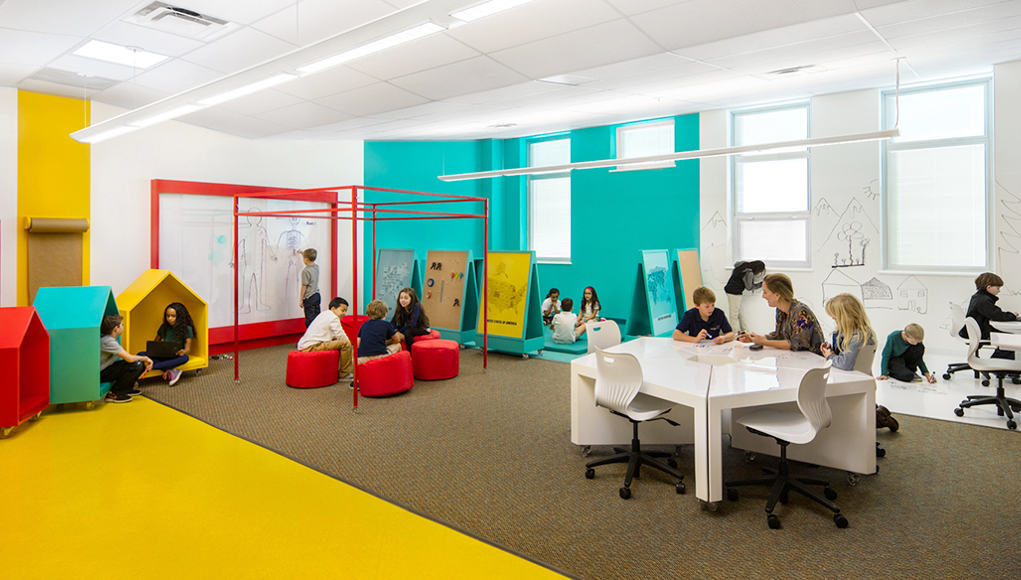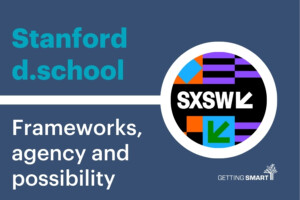Teacher To Teacher: My Journey To Personalized Learning

Feature Photo Credit: Kurani
By Kaeleigh Lawrence
I first heard about personalized learning during a meeting with my former principal. He began talking about how the district was looking into moving towards personalized learning through a blended learning model, and all I thought was, “Oh, this is just another educational fad.”
Fast forward a few weeks and conversations later, and the excitement had become contagious. I found myself yearning to see just what this craze was all about.
My Search For Answers
First I took to Google and through my searching got many different ideas of what blended learning looks like in a first-grade classroom. To sift through it all, I set up a meeting with the school instructional specialist and she told me about Coursera, an online resource with free classes and videos for educators about blended learning. I loved seeing what this teaching method actually looked like in a REAL classroom.
I soon realized that blended learning wasn’t some completely new way to teach or about adding computers for the sake of using technology. It was about putting all the pieces together in a meaningful way. After about a month of research and experimenting with small aspects of blended learning in my classroom, I found that I could no longer resist buying into this “fad.” In fact, I realized it wasn’t a fad at all.
Experimenting On My Own
After I began feeling more confident in my own understanding of blended learning, I became very passionate about teaching my students how to truly collaborate. I knew that in first grade, collaboration was going to be a skill I would need to model over and over again.
The biggest challenge was identifying where to start, but luckily I realized my students were already able to work together to play games, so I knew I could build upon this in a way that turned games into academic conversations.
I began with something my students loved: scavenger hunts! I started out very basic with CVC words and I modeled my expectations. I stated the rules: they must work together and if a member of the group was struggling with a word they all had to help without just telling the answer.
It was not a fast process by any means, but after awhile they would say, “WE KNOW WE CAN’T TELL THEM THE ANSWER, MISS LAWRENCE!” I continued to build on this skill in a more complex and meaningful way and collected data on the types of conversations I heard during group collaboration. It helped me see what areas my students were lacking and where they were excelling after just the first semester.
I noticed that some groups were able to problem solve and collaborate much better than others, and used this data to fix the gaps I saw in the different groups. It was a learning process for all of us, but I was feeling satisfied with the results.
The True Test: School-Wide Implementation
My school district, Warren Township in Indiana, rolled out blended learning in cohorts with the support of Education Elements. My school was in the second cohort so we had the benefit of learning from the successes and failures of cohort one schools. Or so we thought. The one thing we heard over and over was that it was a messy process, which did not sit well with me.
Our principal set up site visits so my colleagues and I could observe first-hand how classrooms within our district were implementing blended learning in an effort to help calm our anxieties around this change. Instead, I walked into classrooms without any chairs, tables that were on the floor and yoga balls for seats and my anxiety skyrocketed. In one classroom students did not even have assigned areas–they just sat somewhere new each morning. There were students scattered everywhere. I was having success with the collaboration and data-driven decisions portion of blended learning, but if I had to give up my tables and chairs I was DONE with this process!
After expressing my hesitations to the instructional specialist and principal, they assured me that they were not going to take away my tables or chairs–that was just the physical structure of the class. Blended learning is NOT just about physical structure, it is about the core four:
- Data driven decisions
- Student reflection/ownership
- Targeted group instruction, and
- Integrated digital content.
This appeased me, and for the majority of that first year, I kept my classroom pretty traditional. I made a few small changes to make rotations more seamless and then promised myself that over the summer I would dig a little deeper into greater improvements for the year ahead.
Turning a New Leaf
At the start of this school year, I felt refreshed and ready to truly dive into a blended learning model. I even purchased TWO yoga balls for a positive behavior reward table. However, the first week came and went and not a single student sat at those yoga balls. It took me about a month to finally let the first two students sit at the yoga ball table and I was shocked at how many students wanted to follow suit.
So, I added a few more yoga balls and even one floor table. I noticed student behaviors were improving with each additional change I made to the physical structure of the classroom. The students not only wanted to sit at these new seats, but they were working hard to keep them. They were able to work in an environment that fit their needs, not confined by what I thought “school should look like.” The next thing I knew, my tables and chairs were gone and my classroom turned into the exact thing that almost made me throw in the towel a year earlier.
As I look around my classroom today and see kids scattered all around, some bouncing, some laying on the floor, I just laugh and think about how much has changed since I started my journey. Every day has a new challenge and things are always changing and evolving, but I know this ‘fad’ changed how I teach and how my students learn for the better.
I still face many ups and downs as curriculum changes, and at times it still feels impossible to make it all fit. I know I still have a lot of learning to do and it’s not perfect, but I know my students deserve this personalized education.
For more, see:
- Starting With the “Why” in Personalized Learning
- Initiative Aims to Catalyze the Personalized Learning Field
- How Can Families and Communities Support Personalized Learning?
Kaeleigh Lawrence is a first-grade teacher in Warren Township, located in Indianapolis, Indiana. Follow her on Twitter: @klawrenc1
Stay in-the-know with all things EdTech and innovations in learning by signing up to receive the weekly Smart Update.




Tyler Cronin
Could you tell me where you purchased the "house" shaped cubbies? They look really cool and I'd love to see if we could buy them. Thanks!